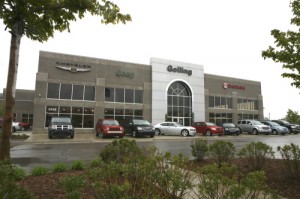
The average age of vehicles in the U.S. is still rising, but the recent run of strong sales will push the numbers down after 2015.
The age of vehicles driven by American has crept up again and is expected to go up again slightly in 2015, according to a new survey by IHS Automotive.
Tom Libby, an IHS consultant, said the average age of vehicles is now the highest has been since R.L. Polk, which was recently acquired by IHS, began calculating the average age of the American vehicle fleet. The average age of vehicles in the U.S. will creep up another notch to 11.5 years in 2015, he predicted.
Consumers are keeping vehicles longer and the vehicles last longer, Libby said. But the age of the U.S. fleet will begin to drop beyond 2015 because the number of vehicles purchased during the Great Recession of 2008 and 2009 is relatively small compared to the number of vehicles sold in the years following the recession. The size of the vehicle fleet in the U.S. could shrink as more vehicles are scrapped.
Americans are also using the vehicles less.
Libby noted the number of miles driven by Americans has stopped growing in recent years and after years of growth during the years before the recession is relatively flat. A combination of rising gas prices, a higher unemployment rate throughout the economy and demographic shifts has contributed to the “flat line” in vehicle miles driven.
(Simple ticket can double insurance rates. For more, Click Here.)
“It’s sort of a mega-shift,” noted Libby, adding that the actual number of miles driven by Americans has actually declined in three of the last seven years. Younger drivers don’t travel as far as older “Baby Boomers,” he said. This is partly a function of the unemployment rate among young drivers, who are also less passionate about cars than their parents.
(Click Here to see how the 2015 Chevy Suburban remains atop the full-size SUV mountain.)
In addition, as sales of new vehicles have picked up in the years after the recession there has been a fairly dramatic shift towards smaller four-cylinder engines. In 2008, according to Polk data, 41% of the vehicles sold in the U.S. had four-cylinder engines.
(To see how the pressure is mounting on GM to establish a fund for recall victims, Click Here.)
Fifty percent of the new vehicles sold in the U.S. had four-cylinder engines in 2012. The four-cylinder share of the market grew to 55% in 2013, Libby told the IHS Spring Automotive Conference in suburban Detroit and is poised to grow even larger as manufacturers bring on more cylinder engines.
“We’re seeing a very big move to smaller engines,” added Libby, who noted that three cylinder engines will soon appear in vehicles sold in the U.S.

As a 62 year old “car addict” since the age of 2, here is my prediction. 2014 should be a banner year for car sales once people find out that the “black box” that can tell if you have garlic on your breath, will be standard in 2015. Anyone who pays attention, will not buy a car with that ability to know if you went 85 mph on an old desert road. Then we have to be concerned in 2017 that our wonderful president wants to see that cars “talk to each other”. The car 3 positions in front of you panic stops because of a ball rolling onto the road, and it tells your car to slow down?
What could possibly go wrong there? “your honor, I didn’t cause the accident, my car stopped on it’s own.” And I’m sure hackers will never attempt to get in there and screw-up the computer settings. Just because we can develop a technology doesn’t always mean it is the “smartest” thing to apply. I also predict that there will be a new demand for 25-30 year old primo condition cars because of the to much big brother watching and the fact that almost every car made in the past 15 years , have been recalled. Computer free cars will enjoy an new revival . Could be wrong , but I think I’m dead on. One more for ya. I predict the Big 3 in the next 10 years will only produce trucks and Large SUV’s. The “throw-away” silver on gray imports will be the only ones making “transportation” cars.
I base this on the current generations X, Y, Z and whatever name they come up with, have no loyalty to American Manufacturers. TThe “love affair” with the automobile is dying off with the Baby-Boomers. 25 years form now , you will never see a Classic car show for the “throw-aways” Time will tell
Mine is a 1994 with well over 200,000 miles. Still going good. I couldn’t get anything to match it except for gas mileage and a new car would never pay for the extra expense through gas savings. I won’t spend new car costs to replace it.